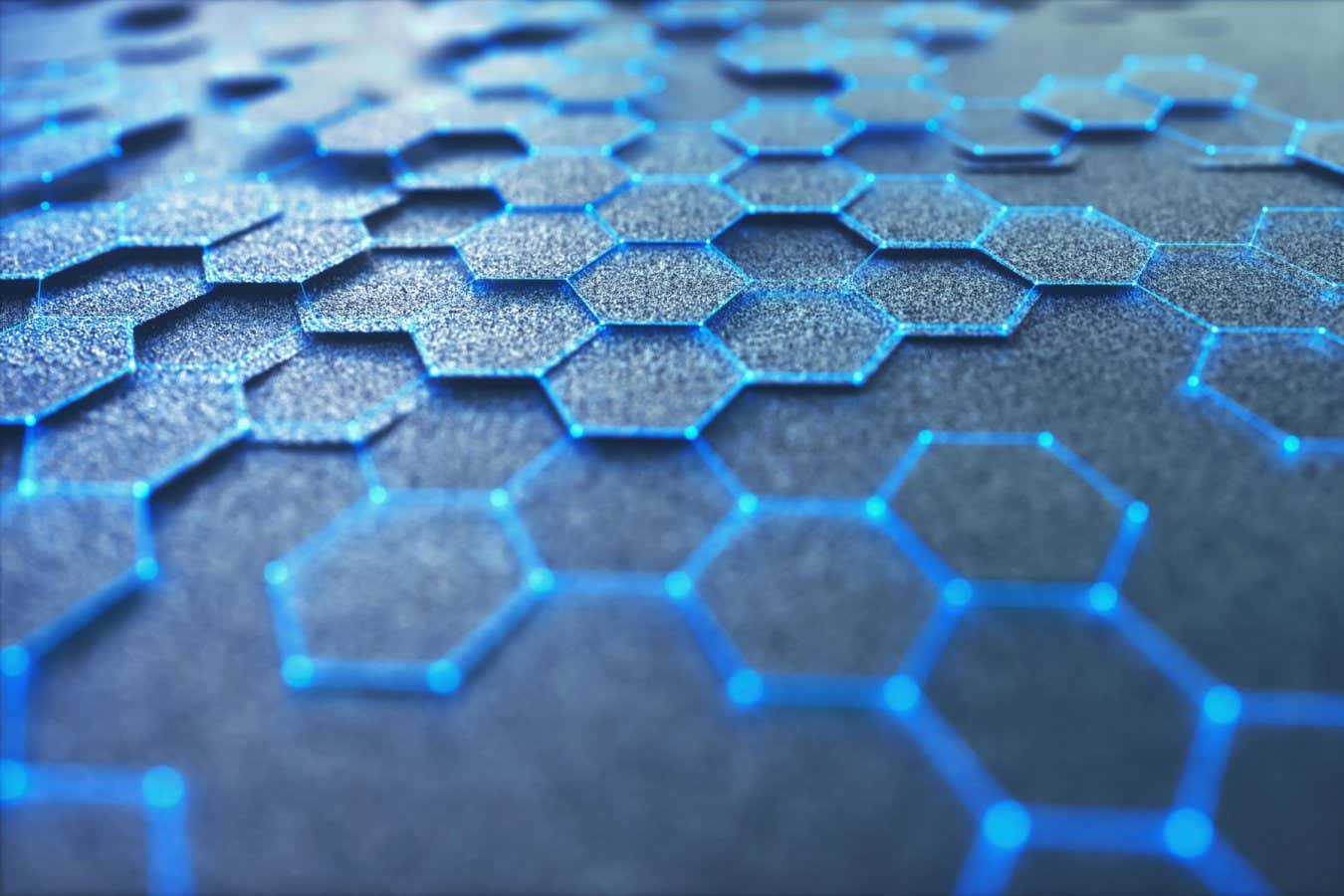The odd superconductivity found in layered graphene may bring us closer to understanding room-temperature superconductors
By Karmela Padavic-Callaghan
5 February 2025
An illustration representing the ultra-thin material graphene
Science Photo Library/Alamy
Why do cold thin sheets of carbon offer no resistance to electric currents? Two experiments are bringing us closer to an answer – and maybe even to practical room-temperature superconductors.
Kin Chung Fong at Northeastern University in Massachusetts was stunned when another physicist, Abhishek Banerjee at Harvard University, told him a number over dinner. They were studying different aspects of graphene – sheets of carbon only one atom thick – but both made the same estimate about how hard it should be for an electric current flowing through graphene to suddenly change.
Read more
Room-temperature superconductors: Here's everything you need to know
Advertisement
Past experiments have shown that very cold stacks of two or three layers of graphene can superconduct, or perfectly conduct electricity without resistance and energy loss, if some of the sheets are rotated by a special angle. But why this happens remained mysterious. The two physicists thought the property they estimated at dinner, called kinetic inductance, might illuminate the answer.
“The feeling was like when you are in a wood hiking [through] the forest, and suddenly you find, well, wait a minute, I’m not the only person in this deep forest,” says Fong.
Together with other colleagues, they turned their idea into two experiments. One group measured kinetic inductance for two layers of stacked-and-twisted graphene; a second group focused on three layers.
